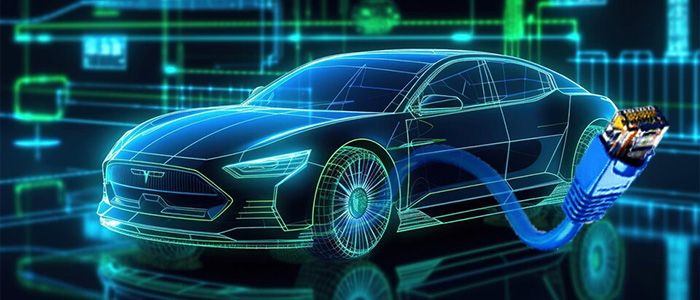
In today’s dynamic automotive landscape, where technological advancements are reshaping mobility and redefining the driving experience, vehicles have transcended their traditional role as mere mechanical constructs. Instead, they have evolved into intricate digital ecosystems that seamlessly integrate cutting-edge innovations. This transformative shift has not only ushered in an unprecedented era of connectivity and convenience but has also unveiled a new frontier of challenges – the vulnerability of vehicles to a spectrum of cyber threats that can compromise their safety and functionality.
Amid this evolving landscape, addressing these challenges head-on has become imperative for the automotive industry. The United Nations Regulation (UNR) 155 has emerged as a pivotal framework that not only acknowledges the significance of automotive cybersecurity but also sets rigorous standards for achieving comprehensive compliance. As the automotive sector continues to push the boundaries of innovation, the need to fortify these modern marvels against digital threats has become non-negotiable.
In light of this, this blog embarks on an exploration of the three essential pillars that underpin UNR 155 compliance: Structure, Know-how, and Technology. By dissecting these pillars, we aim to provide a comprehensive understanding of how they collectively form the bedrock of a secure automotive future, enabling vehicles to embrace technological advancements while safeguarding against the evolving challenges of the digital age. Through a strategic alignment with these pillars, the automotive industry can navigate the intricate terrain of cybersecurity compliance, ensuring that vehicles remain at the forefront of innovation without compromising safety and security.
3 Essentials for Automotive Cybersecurity Compliance (UNR 155)
1. Structure: Building a Resilient Framework
The cornerstone of UNR 155 compliance lies in establishing a resilient organizational structure that places cybersecurity at the core. This structure serves as the scaffold upon which the entire compliance strategy is built. Automakers must conduct a comprehensive evaluation of their existing processes and risk management policies, comparing them against the stringent demands of UNR 155.
This evaluation, often known as a gap analysis, uncovers discrepancies between the current setup and UNR 155 requirements. It highlights areas that require immediate attention, those that can be aligned with industry standards, and aspects that are already in line with the regulations. The crux of this process involves integrating cybersecurity measures across all stages of vehicle development and maintenance. Drawing from established frameworks like ISO/SAE 21434 and ASPICE enables the creation of a robust Cyber Security Management System (CSMS), promoting systematic and repeatable processes that not only ensure compliance but also serve as guiding principles for the workforce.
2. Know-how: Cultivating Cybersecurity Expertise
The second essential pillar of UNR 155 compliance centers on nurturing a skilled and knowledgeable workforce. The regulatory landscape requires personnel well-versed in the intricacies of cybersecurity. However, finding and recruiting experienced professionals remains a challenge due to the scarcity of cybersecurity experts across industries.
To tackle this challenge, the automotive sector has adopted a multifaceted approach. It involves a combination of in-house hiring, engaging external consultants, and conducting tailored training programs to upskill existing staff. The objective is to equip the workforce with the necessary expertise to not only enact policy changes but also respond adeptly to evolving cybersecurity demands.
By amalgamating automotive and cybersecurity know-how, organizations create a robust defense against potential threats while fostering a culture of security awareness. This ensures a holistic and proactive approach to UNR 155 compliance.
3. Technology: Strengthening Defenses through Innovation
The third pillar of UNR 155 compliance emphasizes the integration of cutting-edge technology to bolster cybersecurity defenses. Modern vehicles are complex amalgamations of intricate networks and software-driven components, making technology adoption essential to meeting UNR 155 requirements.
In line with these requirements, automakers must establish a spectrum of capabilities that cover prevention, monitoring, detection, and response mechanisms. This entails adopting advanced security controls and tools, both within the vehicle itself and in the backend systems. From network traffic monitoring and application hardening to enhanced functionality segregation, each measure plays a crucial role in addressing cybersecurity challenges at the vehicle level.
Offboard technologies, such as Security Operations Centers (SOCs), play a complementary role by monitoring and responding to security incidents in real time. The synergy of onboard and offboard security technologies ensures a comprehensive approach to UNR 155 compliance, aligning with the regulation’s proactive intent.
Forging a Secure Path Ahead
The advent of UNR 155 marks a significant milestone in the automotive industry’s journey towards cybersecurity resilience. By focusing on the three essential pillars – Structure, Know-how, and Technology – manufacturers are empowered to not only achieve compliance but also pave the way for a safer, more secure automotive future.
As the automotive ecosystem collectively embraces these pillars, a culture of cybersecurity awareness and preparedness emerges. This collaboration extends beyond individual organizations to encompass the entire automotive value chain, involving stakeholders, regulators, and industry partners. By upholding the principles of UNR 155, the industry charts a course toward vehicles that are not only technologically advanced but also safeguarded against emerging cyber threats, ensuring that every journey is a secure and connected one.


